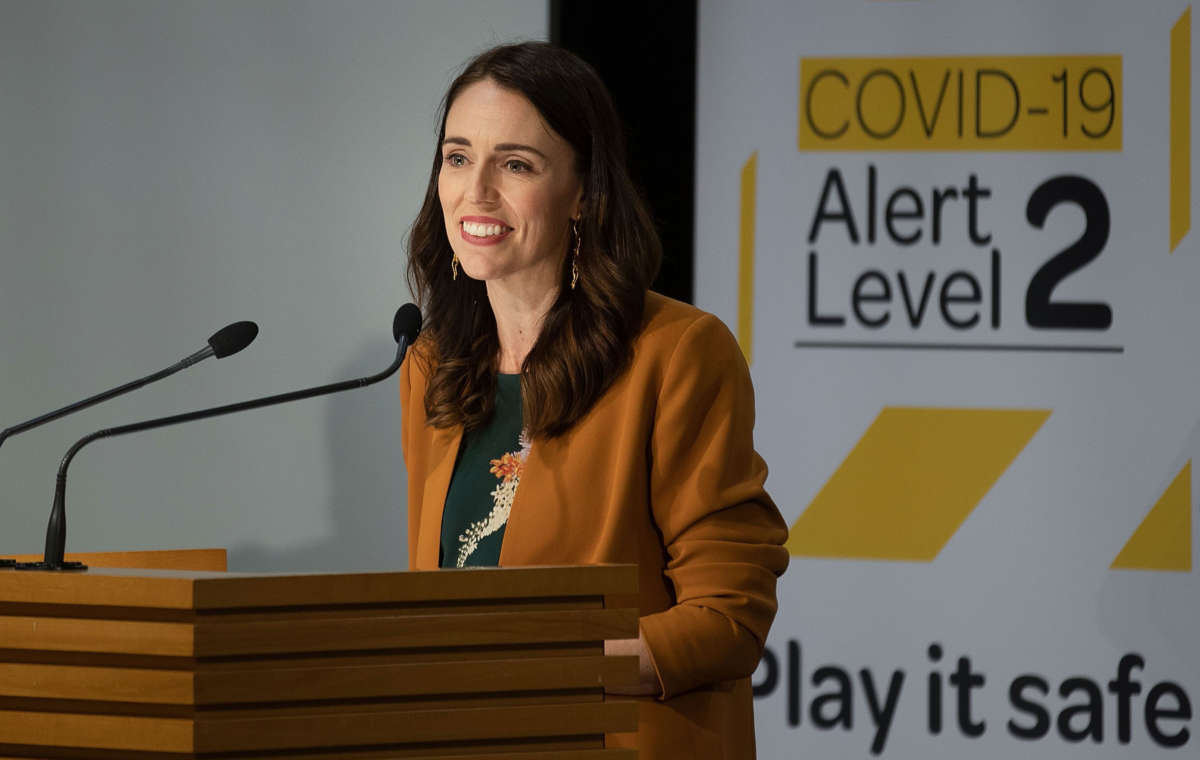New Zealand Prime Minister Jacinda Ardern announced on Monday that the island nation would be lifting almost all of the restrictions it had put in place to respond to the coronavirus pandemic.
Ardern and her cabinet had imposed strict stay-at-home rules nationwide on March 23, along with a two-week quarantine period for anyone arriving in the country.
Aside from those quarantine rules for travelers, however, New Zealanders will now be able to go about daily life in much the same way they did before, including being able to travel to stores, concerts, sporting events and more without restrictions.
“Today, I can announce that [the] Cabinet has agreed, that we will now move to Level 1 to get our economy back to normal again. And we will start almost immediately,” Ardern said on Monday. The decision came about after the last known person to have COVID-19 had recovered from it.
However, the prime minister also recognized that citizens should still take precautions if they start to feel ill. “We will almost certainly see cases here again,” she added.
Still, the country is calling the achievement a great success. It’s a stark difference from how the United States, under the leadership of President Donald Trump, has handled the pandemic.
While Trump has taken some actions regarding the disease, the bulk of his statements on COVID-19 have been criticisms toward those who have urged him to take the matter more seriously, both before and after his administration urged social distancing measures for Americans in the middle of March.
At the end of January, Trump suspended travel from China, a move he’s largely touted as being successful in preventing the spread of coronavirus. A number of scientists have disputed that claim, however, noting that imposing travel restrictions merely delayed the inevitable arrival of the disease.
For the month of February, Trump did little to prepare for coronavirus, even as experts in his own administration voiced concerns, and often suggested those wanting him to do more were being critical simply to make him look bad.
On February 27, during a press conference at the White House on the disease, Trump suggested that those who had contracted it would soon get better, and that no one else would get sick. “When you have 15 people, and the 15 within a couple of days is going to be down to close to zero, that’s a pretty good job we’ve done,” Trump said, congratulating himself.
The following day, he described such criticisms and worries about coronavirus as a Democrat-led “new hoax” against him. As late as March 9, he had said on Twitter that the disease was less worrisome than the flu.
By March 11, more than 1,000 Americans had contracted COVID-19. But Trump would not declare a national emergency until March 13, and didn’t promote social distancing rules until March 16. Even then, those “rules” were simply recommendations for Americans to follow, leaving it to individual states to come up with their own regulations and stay-at-home orders.
Even though he finally recognized the disease as deadly at that time, in less than two weeks Trump once again downplayed its severity, calling for stay-at-home orders imposed by most governors to be ended in order to “reopen” the economy, a move that some sources in his administration say came about due to his worrying about looking bad on the economy during his presidential reelection campaign. Trump also encouraged Americans across several states to defy social distancing rules in order to protest for restrictions to be lifted.
As of Monday afternoon, more than 2 million cumulative cases of coronavirus have been identified in the U.S., with more than 112,000 deaths from the disease counted so far.
According to research from epidemiologists, it’s likely that tens of thousands of American deaths occurred unnecessarily, and could have been prevented, had Trump reacted more quickly to the coronavirus.
It may be quite some time before the U.S. reaches circumstances similar to New Zealand. In a recent survey involving hundreds of epidemiologists, the majority said they imagine it will be another year or more before they personally feel comfortable attending highly attended public events (like a sporting contest or a concert) in the U.S. Fifty-two percent of epidemiologists in the same survey also said that it will probably be more than a year before they personally feel comfortable going out without wearing a mask or face covering, too.
Join us in defending the truth before it’s too late
The future of independent journalism is uncertain, and the consequences of losing it are too grave to ignore. To ensure Truthout remains safe, strong, and free, we need to raise $50,000 in the next 9 days. Every dollar raised goes directly toward the costs of producing news you can trust.
Please give what you can — because by supporting us with a tax-deductible donation, you’re not just preserving a source of news, you’re helping to safeguard what’s left of our democracy.
